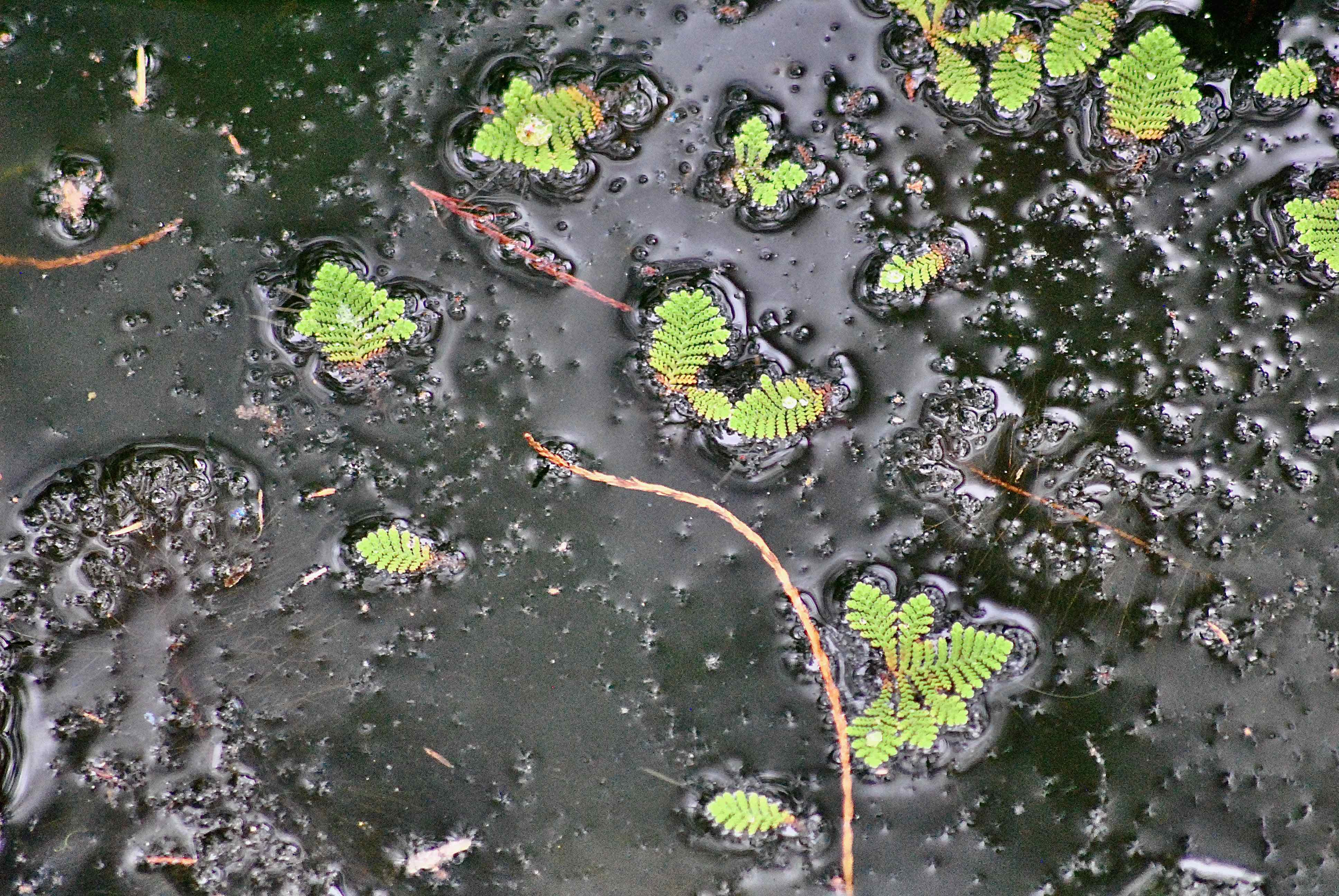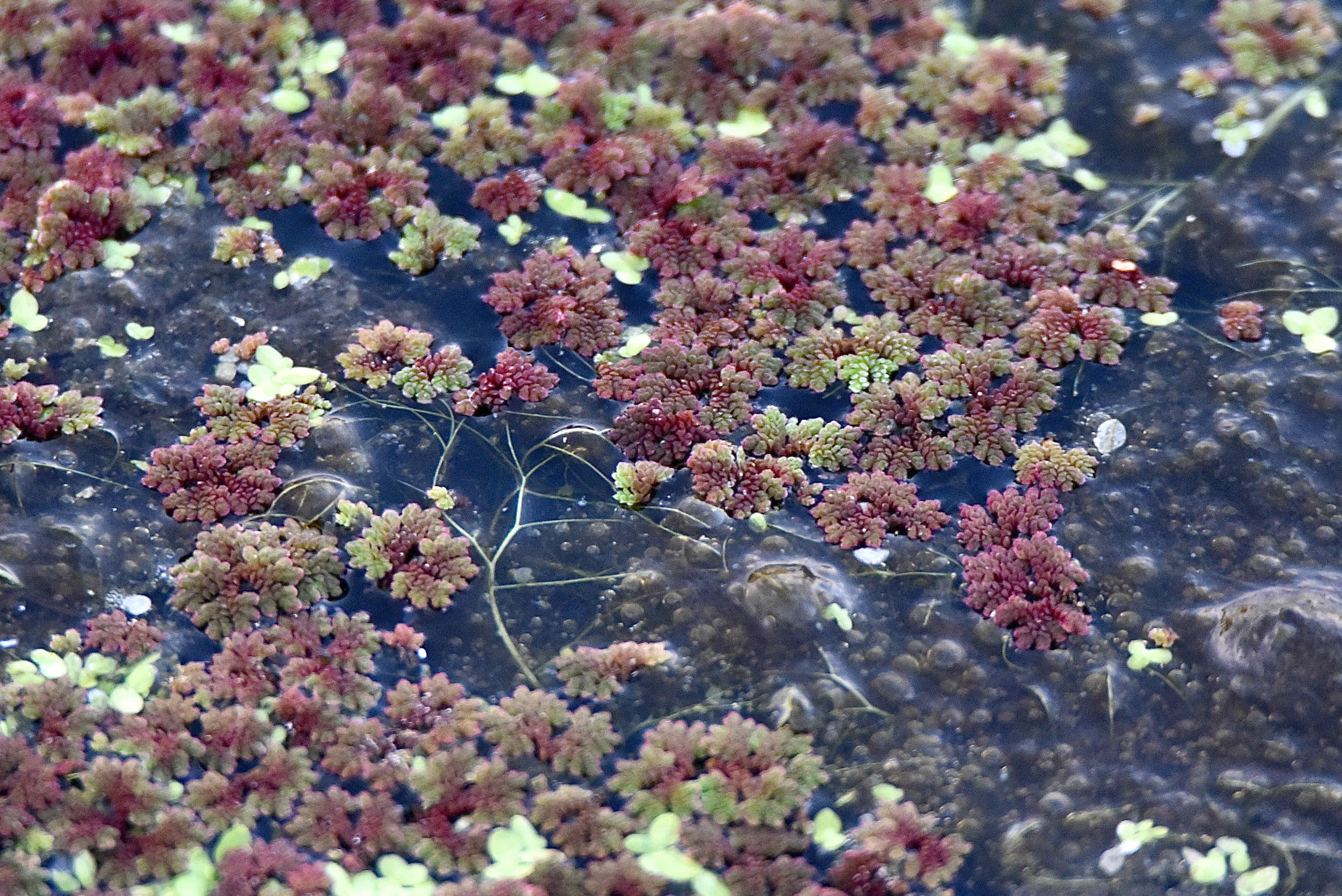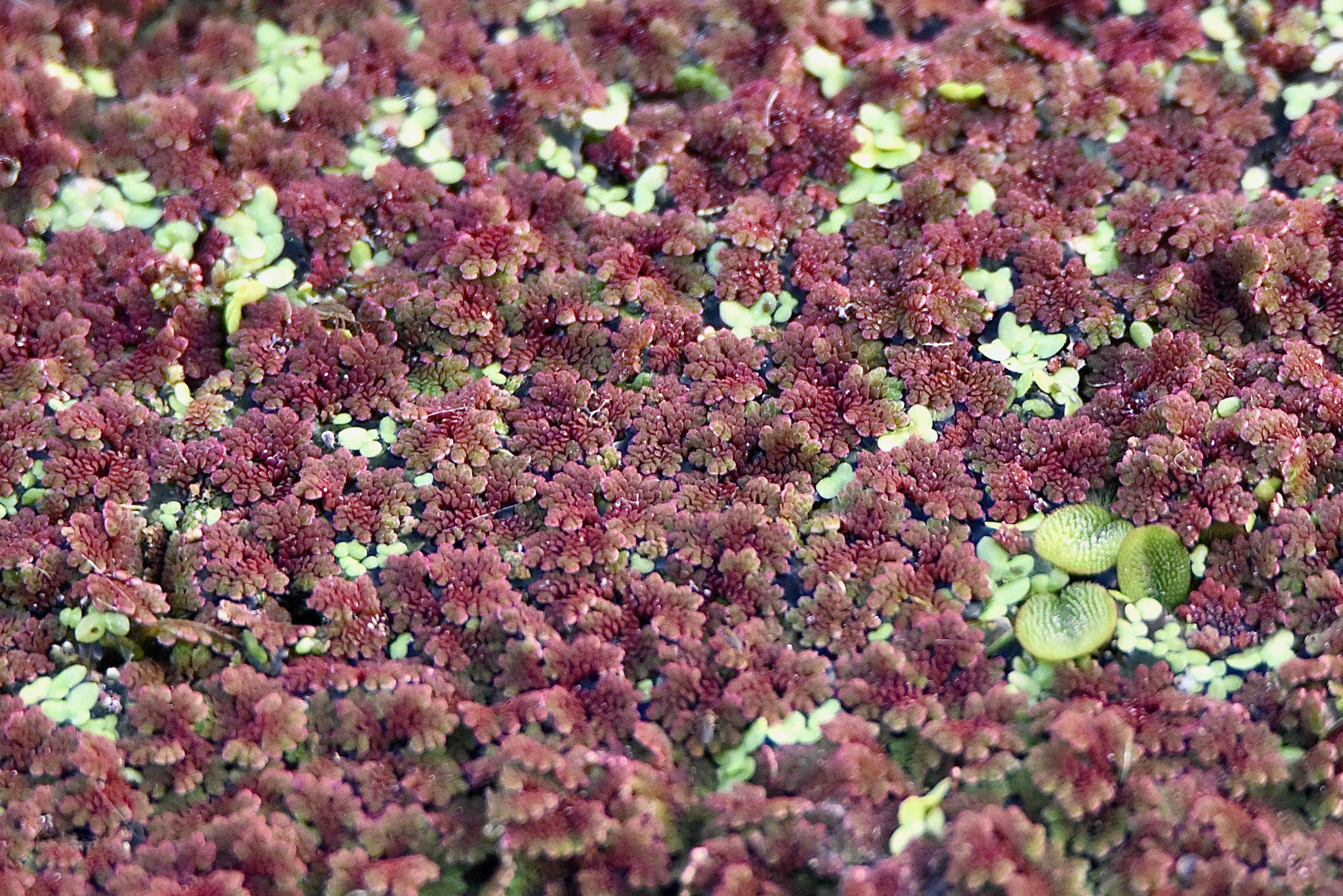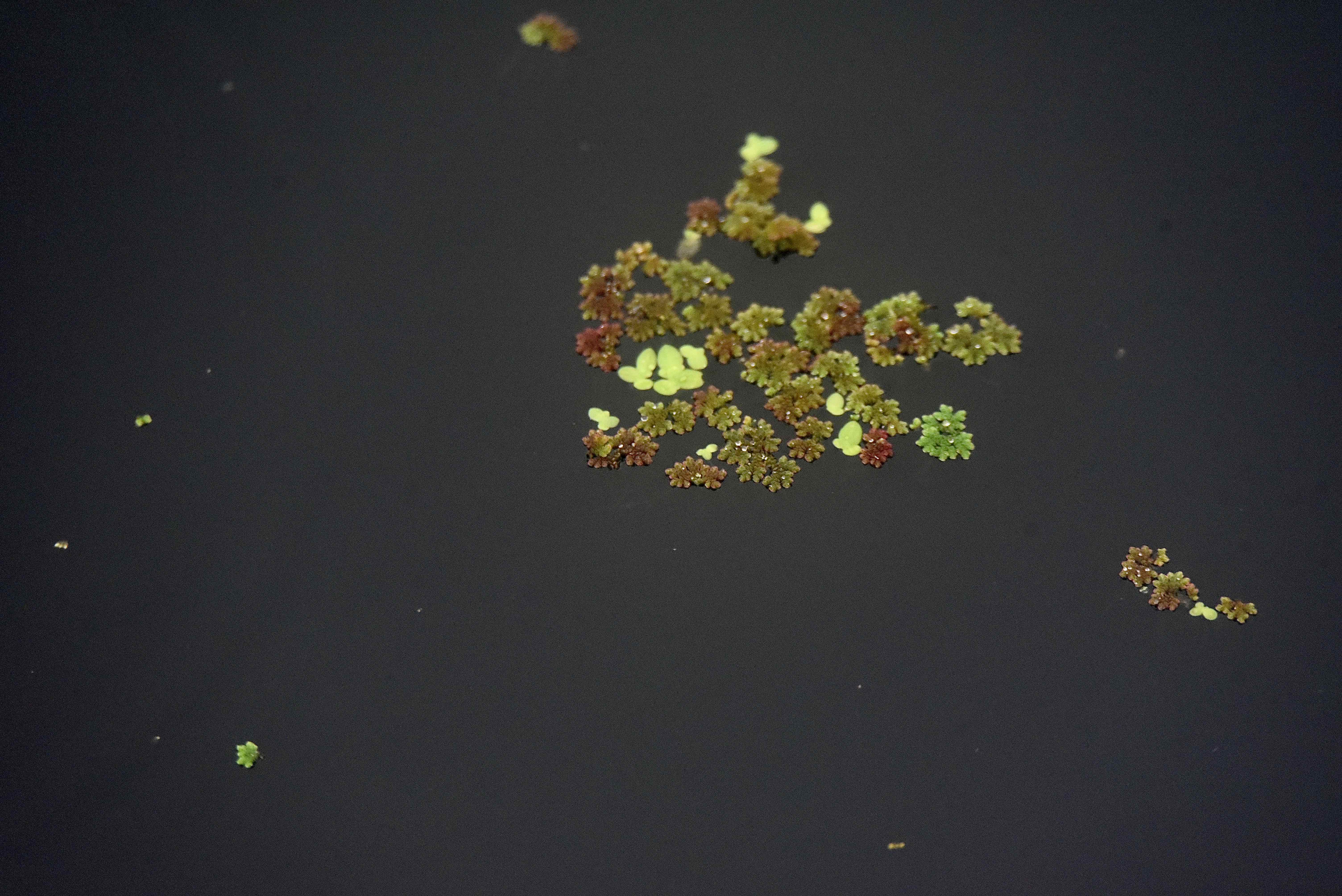
Carolina mosquito fern, photographed at J.W. Corbett Wildlife Management Area, Palm Beach County, in September 2015.
Carolina mosquito fern, Azolla caroliniana, has a little friend that potentially makes it valuable as both fertilizer and animal feed.
The “friend” is a bacteria known as Anabaena azollae that lives in voids within the fronds of the plant. The bacteria enables the plant to take nitrogen from the air and “fix” it for use within the plant. Nitrogen is a key plant nutrient, and Carolina mosquito fern and its relatives have been used as fertilizer in Asian rice paddies for centuries. It seems as if the rest of the world is catching on to the possibilities it presents to help feed an increasingly hungry world.
Carolina mosquito fern is a Florida native found in stagnant or slow-moving bodies of water, such as ponds, lakes, swamps and marshes. Its range within Florida includes most of the state, but it’s also found throughout the Caribbean, Mexico, Central America and South America.
In the United States, it’s found as far north as Maine and southern Canada and as far west as South Dakota, Nebraska and Kansas.
It’s a small, free-floating water fern with scale-like fronds. It’s dark green, or green with red outlining the edges; in strong light, the entire plant turns red or reddish purple. It reproduces via spores, like all ferns do, but it can also reproduce when pieces break off a plant. Some sources say Carolina mosquito fern rarely reproduces by spores, however.
In waters with an abundance of nutrients, it can form dense mats.
Carolina mosquito fern is used in water gardens and ponds; it’s available for sale on the internet. But it is its ability to fix nitrogen that makes it an incredibly useful plant. In southeast Asia, mosquito fern is grown in rice paddies; as the plants die, they settle to the bottom and decay, making their nitrogen — a key nutrient — available to other plants. An acre of mosquito fern can produce as much as 40 pounds of nitrogen and at much less cost than chemical fertilizers and without the environmental baggage.
But that’s not the end of the story. Carolina mosquito fern is full of protein, making it a cheap and environmentally friendly animal feed.
A quick taxonomic note: There are sources that do not recognize A caroliniana as a species unto itself. Instead they classify it as A filiculoides, commonly known as Pacific mosquito fern or American waterfern. The venerable Atlas of Florida Plants notes that a DNA study of Carolina mosquito fern specimens taken from Florida, Wisconsin and Ohio found them to be “distinct” from a sample of A filiculoides taken from Brazil, which would which tend to indicate that A caroliniana is a separate species. But it also concludes, “The taxonomy of Azolla in Florida remains muddied.”
Other common names: eastern mosquitofern, fairy moss and mosquitofern. Also spelled mosquito fern. By the way, the common names come from a belief that mosquitos can’t lay their eggs in waters where the fern grows.
Carolina mosquito fern is a member of Azollaceae, the mosquito fern family.
J.W. Corbett Wildlife Management Area



